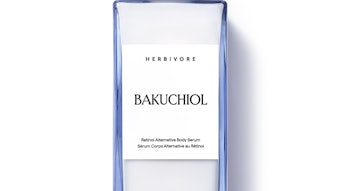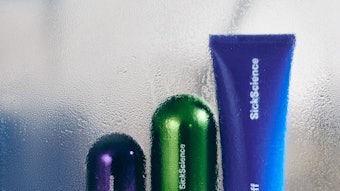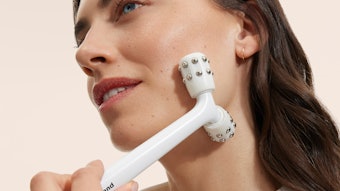- Ingredients that offer multiple claims or can be applied to more than one product category are valuable in both the formulation and in telling a brand’s unique story.
- Talking about an ingredient outside of its known category or for displaying a little-known claim can help gain attention and results.
- Multitasking ingredients can free up formulation space to add more specialized ingredients and help contribute to simpler, easier-to-understand product labeling.
To function in modern society, nearly everyone is a multitasker. From everyday at-home tasks to work responsibilities, family and friend activities, and a variety of other obligations, we’ve all worn multiple hats in a single day—or even an hour—in order to get done what needs to get done. However, when the multitasking responsibilities fall on something such as beauty ingredients, it can turn out to be not only a time- and value-saver but also an interesting way to differentiate your brand’s beauty products to consumers.
In the Market for Multitasking
“My personal point of view [is], as a supplier, we can consider multitasking ingredients at two levels—ingredients that can be used in different kinds of finished products (body, sun care, makeup), like a polymer; and active ingredients that have several modes of biological activities, and thereby offering several claims for their use,” explains Fabrice Lefèvre, scientific marketing manager, Induchem Companies.
“Multitasking active ingredients are half-devil, half-angel molecules,” Lefèvre continues. “Angels because they answer at least four requests:
- They enable [beauty brands] to face economical constraints and reduce formulation costs (using one ingredient instead of two or three);
- They are more easily integrated in formulas, with fewer incompatibilities;
- They generate less issues for toxicologists and are coded only once for several uses; and
- They answer one growing tendency from customers: having one cream to take care of several problems at one time.
“[They are] devils because they cannot always act on each biological target with the level of efficiency [needed]. It’s almost like these famous multitasking kitchen robots: you use them for one specific application, but not for all of them. So they have to be used carefully by brands, who need to discuss in detail with suppliers the use of these compounds to make sure they make the best choice,” Lefèvre concludes.
Recognizing Various Uses
Obviously, there are many considerations in the formulation of any type of beauty product, and the presence of multitasking ingredients doesn’t negate that. However, they can provide more opportunities and solutions for various products. “Multitasking active ingredients are like a triple chocolate cake: you always have a top layer—the first claim or benefit—and then additional ones,” says Lefèvre, citing examples from Induchem that include Unisooth EG-28, which works to remove dark circles and also is soothing; Unitamuron H-22, the vegetal equivalent of a high molecular weight hyaluronic acid, which offers a velvety feel, and also restores skin hydration and smoothness; and Unilucent HR-14, a radiance enhancer that also works to increase skin firmness.
In fact, you don’t have to dig very deep in beauty ingredients to find options that provide more than one solution for solution-hungry formulations. “Proteins offer moisturization and softening benefits to the hair and skin,” says Suellen Bennett, global marketing manager, Lonza Personal Care. “Animal proteins, such as collagen and elastin, have been used on skin and hair for decades, and proteins can be, and are currently used, in all types of personal care products—hair, skin, body and color cosmetics. In response to consumer demand, we have created a full line of plant- and yeast-derived proteins that are just as multitasking as their animal-derived counterparts.”
And Robert Griffiths, vice president, sales and business development, Chemsil, comments, “Silicones in general are multitasking. In skin care applications, they deliver skin conditioning and moisturization, as well as enhancing the spreadability of other ingredients in the formulation. They can also be useful for transient delivery, softening, conditioning, anti-static, color protection, color enhancement and more—silicones are used in all aspects of beauty products. Nearly 70% of all new beauty products commercialized include some amount of silicone.”
From different functional and active benefits and claims to help with preservation and formulation, beauty ingredients of every variety can contribute as multitaskers. “We offer a number of natural functional and active ingredients that we consider to be multitasking,” says Satish Nayak, PhD, director of research and development, Kemin Personal Care. “The primary function of our Lysofix ingredient is a natural emulsifier derived from non-GMO soybeans, but it is available in a glycerin carrier, which also provides the added benefit of moisturization. Kemin ingredient Rosamox is primarily used as an antioxidant to prevent oils used in formulations from going rancid. However, when applied to skin, Rosamox can also provide antioxidant benefits. And our FloraGlo Lutein Topical is a natural antioxidant from marigold extract. When applied topically and daily, FloraGlo Lutein may demonstrate an increase in skin hydration, lipid content and elasticity.”
Some ingredients are developed with multitasking in mind, or at least with knowledge that they will be able to offer more than one claim for a product. However, some multitasking benefits are only found as the results of testing and use. Lefèvre explains, “Initially, we designed an ingredient called NovHyal Biotech G as a needle-free substitute of reticulated hyaluronic acid from esthetic medicine.” However, when the ingredient began performing well, Induchem decided to see what else it could do. “Additional benefits appeared during our testing: firming and regenerating actions, and obviously as we reactivate hyaluronic acid synthesis deep into the skin, we favor the capture of water in the skin. We now advise using this ingredient for anti-aging face care to delay surgery, for body care for deep moisturization and firming, and also in active color cosmetics like foundations.”
Multitasking ingredients don’t only have to multitask in regard to offering multiple claims and benefits, though. They also can offer environmental or technical aspects that can help as another step in telling a brand’s story. “Saberry, an amla extract, has not only anti-tyrosinase activity and is used as a skin-lightening agent, but also has antioxidant activity, which helps to provide protection against free radicals induced by UV,” says Anurag Pande, PhD, vice president, scientific affairs, Sabinsa. “Amla fruits have also been studied for their MMP-1 inhibitory activity so they can help to reduce the breakdown of collagen in the skin and hence act as anti-aging. Another of our ingredient products, Sapindin, derived from traditional hair care ingredient soap nut, provides not only detergent action but also has antifungal action against the dandruff-causing agent Malasezzia furfur. Sapindin can be used to make a natural shampoo, which has foaming action as well as a cleansing action.”
Another example from Lonza shows natural-based multitasking elements. “We are in the process of launching the Polyaldo line of naturally based emulsifiers, which are also multitaskers,” says Bennett. “They can be used in both hair and skin applications to create a variety of product types from surfactant systems like shampoos and body washes to traditional oil-in-water emulsions. Their next strength in trade is that they can be considered green, as they are naturally derived from renewable resources.”
Obviously, multitasking ingredients can also help brands catch onto larger trends while not sacrificing the results they need from a product, and an example of this would be Sabinsa’s Cococin, an ingredient obtained from freeze-dried coconut water from young coconuts. “Cococin can be used as a moisturizer on the skin and can also be formulated in hair care products to provide nourishment to the hair follicles and for hair growth,” says Pande.
Talking Differentiation
One of the major challenges in using multitasking ingredients is helping consumers to understand how the use of that particular ingredient targets and aids in offering a different solution, or how it offers more than one solution. “It’s a matter of context,” says Lefèvre. “We usually help customers in designing their cocktail of actives, taking care that they use the best ones in terms of benefits and claims versus cost and possible marketing claims on the packs. We send them a summary with scientific and marketing elements to support their developments, and explain the rational of each ingredient.” This way, the beauty brand owners, product developers and marketers also can understand the breakdown and use this language in explaining the product in a retail environment.
To help keep it clear, Lefèvre says, “We always promote the major claim/benefit of an ingredient first. I am thinking about Inoveol CAFA. This ingredient is a 5-in-1 anti-photoaging molecule, and this is the way we introduce it on the market. Then we mention that it is an antioxidant, bioactivated and in situ-released. This way, customers can use the terms ‘anti-photoaging, with the last generation of bioactivated antioxidant activated on your skin.’ Same for our needle-free hyaluronic acid. We first mention that it replumps and regenerates skin before mentioning that it favors moisturization.”
Being straightforward based on the primary necessities of the product an ingredient is being formulated into is wise, as well. “We usually try to differentiate based on the efficacy parameters of the ingredient,” explains Bennett. “For instance, in a hair care application, we may focus on film-forming capability, but in skin care, on moisturizing abilities.”
Bennett also notes that brands’ needs are always top of mind. “Instead of being biased toward more marketable elements, though, I would say we bias toward what the customer is looking for as we discuss the ingredient,” she says. “In other words, we custom tailor our presentation to address the particular needs the customer has expressed.” And Nayak notes, “If there is a particular interest in a certain aspect of an ingredient that we have not explored, we work with the customer to customize the study for their formulation.” Pande concurs, saying, “One of the advantages with Sabinsa’s ingredients is that they go through a series of tests for claim substantiation, hence the ingredients speak for themselves. For every ingredient, Sabinsa provides the scientific evidence for its proposed claims or functions. Based on the formulation in mind, the formulators often add ingredients for targeting a specific condition or function.”
Ingredients with multiple claims can get pigeonholed though. “The ingredients with multifunctional effects often get compartmentalized into certain cosmetic segments, which makes it challenging for a brand to promote in other segments,” Pande notes. “However, scientific evidence and claim substantiation often provide a strong rationale for broadening the use of cosmeceutical actives in different cosmeceutical segments.”
And Bennett notes, “The biggest challenge is actually proving that the ingredient has efficacy in the different segment. But it is more of an opportunity, really, as we get to present new data for a currently available ingredient, which could drive increased sales. Much easier than doing a new launch from scratch.”
The final word always comes down to the product needs. “It’s all about the feel and what the customer wants,” says Griffiths. “An in-depth understanding of the end product and desired attributes helps us to tailor make the solution.”
More Multitaskers
This category of ingredients continues to move ahead as well, with new innovations and discoveries taking place every day. “We are steadily testing molecules from our existing portfolio for new applications, based on customers’ feedback and scientific surveys,” says Lefèvre. “Once we have all the results, then we come back to the market and inform customers that they can use such or such compound for a new application. This is usually extremely appreciated, as the ingredient is already coded by their company, and can therefore be used directly.”
But perhaps the biggest advantage in utilizing multitasking ingredients is the potential to offer consumers multiple benefits that can be expressed through simpler messaging/labeling. “We feel that the more multifunctional an ingredient is, the better,” says Nayak. “If an ingredient can perform multiple functions, it frees up room in formulation for some really novel ingredients to be used to perform unique functions. In addition, the fewer ingredients on the label, the easier it is for consumers to understand the beauty products and be informed about what they are using.”










